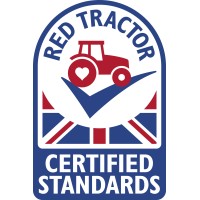For anyone operating a food business, there are rules governing the information which must be provided to consumers about the food products, even if these products are provided free of charge.
In alliance with 7 other advisory committees and public bodies, the Food Standards Agency works to enforce regulations around food safety and labelling. This gives us, the consumer, confidence that the food we purchase is safe, of good quality and is meeting our nutritional needs.
Highlights from these regulations are included below, along with links to the relevant gov.uk web pages.
Food Labelling
To protect consumers and allow them to have informed choice, food labelling in the UK is covered by the retained European Law, ‘Food Information to Consumers Regulation’ (excepting Northern Ireland (NI) where food law is listed in the NI Protocol).
For food that is packaged before it is put on sale (pre-packaged), specific mandatory information must be displayed on the label. That information should be legible, clearly accessible, not misleading and include:
- Food name
- Ingredient list by weight – where there are 2 or more ingredients – from the largest to the smallest ingredient
- Declaration of allergens*
- Quantitive declaration of ingredients (QUID) shown as a %. This is required, for example, if the ingredient appears in the food name, such as ‘pork sausages’
- Net quantity – if the weight/volume is over 5g/5ml
- Conditions for safe storage
- Dates – use-by or best-before
- Name and address of the manufacturer
- Provenance
- Preparation/cooking instructions
- Declaration of nutritional content – see the post ‘Nutritional Needs’
Compositional standards are used for a range of food products, such as jam, honey, fruit juice and flour. These foods should be of a particular quality or composition and the standards ensure lower quality alternatives are not introduced. For example, a sausage must contain at least 42% pork to be called a ‘pork sausage’.
Labelling requirements for food that is not pre-packaged are slightly different, applying to food sold at a retail outlet, food from a restaurant or takeaway or food packaged on the premises, which may or may not be done in the customer’s sight. The name of the food and a QUID (see above) for meat products must be shown, though an ingredient list is not required by law.
For more information on food labelling follow this link
*Food allergens
Allergic reactions to food occur when the body’s immune system perceives the proteins in certain foods as a threat and releases chemicals to counteract this threat. Symptoms can range from a mild rash to severe, life-threatening anaphylaxis with breathing difficulties and loss of consciousness.
14 allergens have been identified by law as the most potent and prevalent:
- celery
- gluten in cereals such as wheat, barley and oats
- crustaceans, e.g. prawns, crab, lobster
- eggs
- fish
- lupin
- milk
- molluscs, e.g. mussels, oysters
- mustard
- peanuts
- sesame
- soybean
- sulphur dioxide and sulphites
- tree nuts, e.g. almond, Brazil, cashew, pecan, pistachio, macadamia
If their products contain any of the above the consumer must be advised of this by the food producer. This can be done in a number of ways, dependent on the type of food and where it is purchased:
- For pre-packaged food allergens must be highlighted in the ingredients list, e.g. in a bold, italic or coloured typeface
- Where food is not pre-packaged it must be possible to obtain details of allergen content. This applies to food sold loose at retail outlets as well as restaurant and takeaways, where it might be on a menu or chalkboard. Prompts should request the consumer to ask a member of staff at the food establishment, if the information is not available in writing.
- From 1 October 2021, food that is packaged and sold on the premises must display an ingredient list with any allergens highlighted
- Cross-contamination can occur at food production sites. Where there is real risk of an allergen unintentionally making its way into a foodstuff, manufacturers should use precautionary labelling by adding the phrase ‘may contain X’ where X is the allergen of risk.
For more information on allergens and food labelling follow this link
Use-by and best-before dates
Use-by dates are provided on perishable foodstuffs, such as meat, dairy products and bagged salads, for your safety. Provided the food has been stored as recommended it should be safe to eat up to and including the use-by date but not after, because of the risk of contamination from micro-organisms.
Best-before dates guide the consumer on the quality of food and are often used on frozen, canned or dried foods. If a product is eaten after a best-before date the quality could be inferior even though it is safe.
For more information on use-by and best-before dates follow this link
Nutrition and health claims
Under The Nutrition (Amendment etc.) (EU Exit) Regulations 2019 and 2020 there are legal requirements in Great Britain with respect to health and nutrition claims made about foods in a commercial context. Such claims must be submitted with supporting evidence for scientific assessment. All claims, whether authorised or rejected, are listed in the Great Britain Nutrition and Health Claims Register – linked here.
Under the Northern Ireland Protocol, EU legislation relating to nutrition and health claims continues to apply.
A nutrition claim ‘states, suggests or implies that a food has particular nutritional properties due to the presence, absence, increased or reduced levels of energy or of a particular nutrient or other substance…examples are “reduced energy”, “contains calcium”, “low-fat”, high fibre”, “no added sugar” ‘.
For example, regulation requirements are such that to describe a product as ‘low fat’, there must be no more than 3g of fat per 100g of solid product.
A health claim ‘states, suggests or implies that a relationship exists between a food category, a food or one of its constituents and health…such as “calcium helps maintain normal bones” ‘.
Regulations stipulate for example, that health claims referring to the rate or amount of weight loss are not permissible on a food product.
For more information on nutrition and health claims follow this link
Enrichment and fortification
The same regulations for nutrition and health claims also cover enrichment and fortification of foods.
Enrichment is where nutrients lost in the processing of a product are added back. For example, iron, thiamin and niacin are removed during the milling of white and brown flour and must be reintroduced by law (this does not apply to wholemeal flour).
Fortification is where nutrients that didn’t necessarily occur naturally in a product are added. For example, some breakfast cereals are voluntarily fortified with vitamins.
The regulations contain lists of vitamins, vitamin formulations, minerals and mineral substances which may be added to a foodstuff, with a definition of a minimum amount that would provide a beneficial effect, as well as maximum amounts permissible to prevent adverse health effects.
For more information on enriched and fortified foods follow this link
Red Tractor Assurance
There are other schemes which underpin the quality, safety and high standards of British food, one of which is Red Tractor Assurance.
The Red Tractor is a quality mark of the Assured Food Standards Organisation promoting and regulating food quality in England, Wales and Northern Ireland. They cover areas such as animal welfare, food safety, traceability and environmental protection.
The Red Tractor logo can be found on food in all the major UK supermarkets. Products displaying the logo can be traced back to the farms where they originated.
Follow this link for a YouTube video

